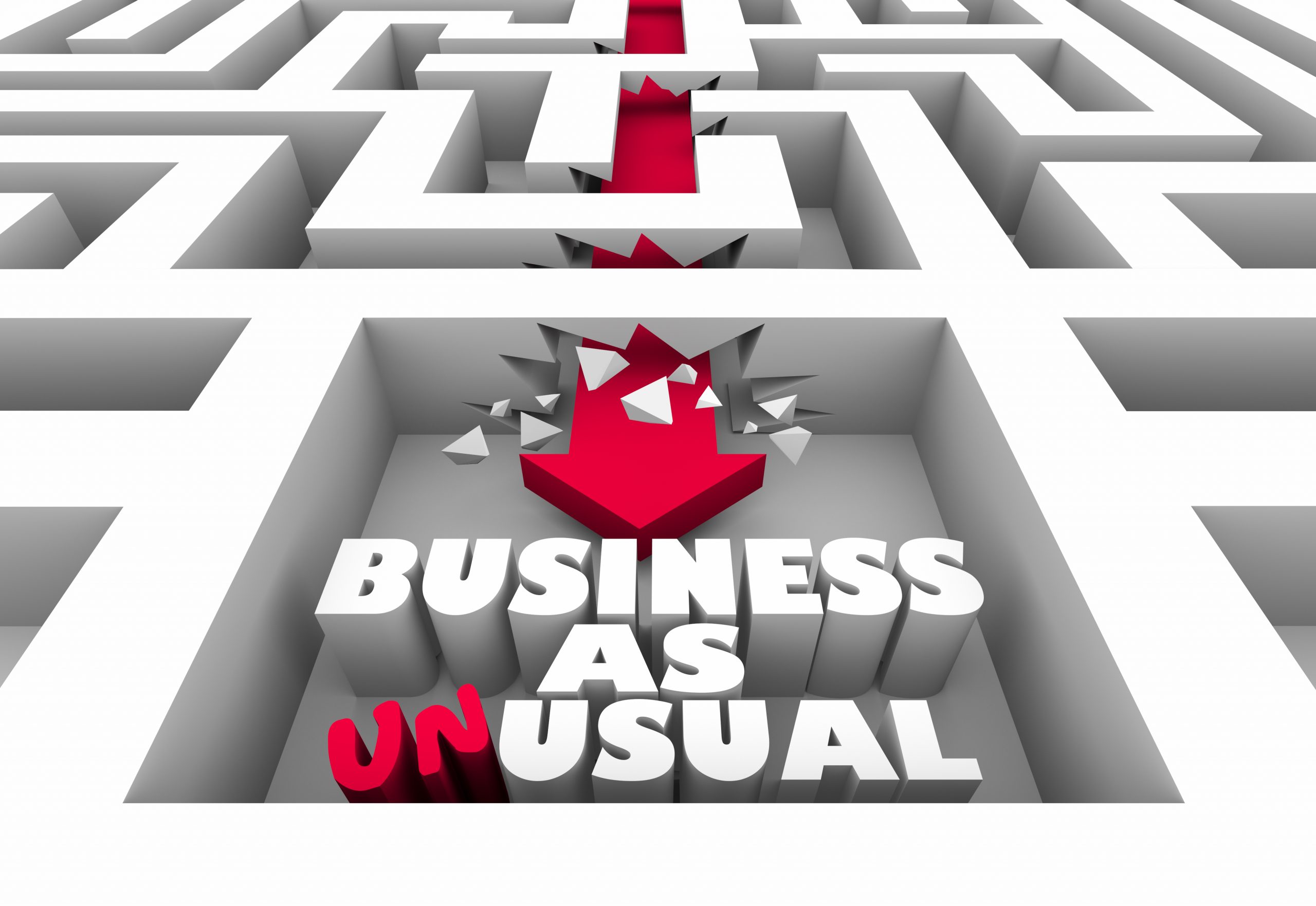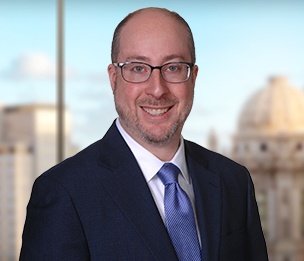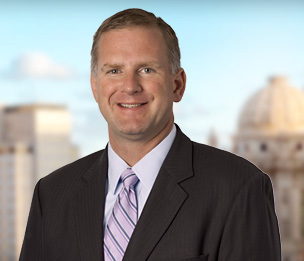“Given the success of virtual hearings, it is likely courts will continue to utilize them in many instances, but resume traditional in-person hearings when it is safe to do so for important matters.”
 Greek philosopher Heraclitus is credited with saying “the only thing that is constant is change.” In 2020, life for everyone changed, including for those in the intellectual property (IP) sphere. There were changes at the U.S. Patent and Trademark Office (USPTO), in IP litigation, client activities and business development. Looking into the crystal ball, we believe some of those changes are here for good, while others are not.
Greek philosopher Heraclitus is credited with saying “the only thing that is constant is change.” In 2020, life for everyone changed, including for those in the intellectual property (IP) sphere. There were changes at the U.S. Patent and Trademark Office (USPTO), in IP litigation, client activities and business development. Looking into the crystal ball, we believe some of those changes are here for good, while others are not.
Practice Changes at the USPTO
The USPTO was quick to action moving all interviews, oral hearings and other in-person meetings to telephone and video conferences, and closing its offices to the public. Relief from a few minor requirements was quickly implemented (e.g., waiving petition fees and signature requirements). The most substantive relief came with the CARES Act which allowed the USPTO to grant extensions of time to file certain documents and pay required fees.
The USPTO implemented initiatives related to technologies and products for helping the country handle the pandemic. One is a web-based marketplace for pandemic-related patents and patent applications available for license. There are now almost 900 assets listed in the marketplace covering various technologies, including disposable wipes and RNA extraction methods.
Other initiatives focused on COVID-19 inventions and products. These included a pilot program for priority patent examination on COVID-19 related inventions and priority examination for trademark and service mark applications for COVID-19 medical products and services.
The USPTO created a webpage to help practitioners and the public keep track of the changes and initiatives. Between March 15 and the end of September, there were more than 20 notices related to COVID-19. Practitioners had to keep up with all of these changes and assess whether their clients could benefit.
For IP Litigation, Some Things Drastically Changed While Others Stayed The Same
With many courts shutting down to stem the rising tide of cases, almost all IP case deadlines were continued pursuant to court order. Because IP clients were often dealing with health and business issues, pending and prospective IP litigation matters were often placed on hold so that clients could focus on matters of more immediate importance.
With courts closed, parties seeking to resolve IP litigation matters found themselves taking things into their own hands by initiating settlement discussions and alternative dispute resolution.
Additionally, judges and IP lawyers became adept at conducting virtual hearings. Given the success of virtual hearings, it is likely courts will continue to utilize them in many instances, but resume traditional in-person hearings when it is safe to do so for important matters such as summary judgment and jury trials.
In anticipation, several courts recently began to defrost their dockets. However, scheduling trials continues to be difficult. Chief Judge Rodney Gilstrap recently announced he was postponing all jury trials in the IP-heavy Eastern District of Texas until March 2021 citing, inter alia, the rising rate of increase of COVID-19 cases and travel restrictions and quarantines. Other courts throughout the country have issued similar orders. When trials resume in earnest, priority is given to criminal cases over civil cases, meaning IP trials in many busy courts may not take place until well into 2021. But this will be assessed on a case-by-case basis by the judge.
In terms of patent litigation, 2020 has seen a decrease in most cases. However, Hatch-Waxman litigation continues unabated due to immovable deadlines, and NPE litigation appears to be picking up. Looking to 2021, we expect patent litigation to look much like it did pre-pandemic, with the possible exception of additional NPE cases under patents recently owned by companies that had to sell their IP as a result of financial hardships.
COVID-19 Forced IP Lawyers to Adapt Their Marketing and Business Development Activities
Before COVID-19, attorneys used “easy” BD tools: flying to business meetings, taking clients to sporting events, hosting dinners, and professional networking. That went out the window with COVID-19, so everyone needed to think outside of the box.
IP clients and lawyers, both generally tech-savvy, were well-suited for the near-total shift to virtual meetings. Clients and attorneys gathered through online platforms to discuss matters. Between seeing a person’s facial expressions and sharing documents, IP clients have learned they can, with little expense, “meet” with lawyers remotely with minimal loss of value. Utilizing remote tools for marketing was a win-win for everyone.
Before the pandemic, a common refrain was “there isn’t enough time,” but, with COVID-19, many attorneys had nothing but time. Checking in with clients both personally or professionally, writing articles, connecting with more contacts on LinkedIn, and increased webinars became the new norm after April 2020. Major annual meetings moved online, thus avoiding travel and expense while still providing high-quality content and marketing opportunities.
Finally, given fewer opportunities to reach out to potential new clients, the pandemic provided IP attorneys an opportunity to focus on existing key clients, including to possibly explore assisting in areas outside of IP. During COVID-19, the old proposition that it is easier to retain an existing client than acquire a new client proved to be true.
What’s in Store for 2021?
With the recent approval of COVID-19 vaccines, there is optimism that the world, including IP practice, will eventually get “back to normal” in 2021. However, it is estimated to take at least until June before vaccinations hit estimated critical mass levels. This means that at least the first half of 2021 will bring little to no change in the practice.
The bigger unknown will be what “back to normal” actually looks like. Law firms have discovered that remote working and business development can be just as productive, with potential to significantly reduce costs. Courts and attorneys across the country have become adept using technology for remote proceedings, and the savings, both in time and costs, are likely to compel continued use.
Where IP-related litigation falls in the priority for civil cases is uncertain, but expect multi-day patent jury trials to move to the back of the line. This could result in a very busy second half of 2021 for IP trials.
Image Source: Deposit PHotos
Author: iqoncept
Image ID: 199588552

![[IPWatchdog Logo]](https://ipwatchdog.com/wp-content/themes/IPWatchdog%20-%202023/assets/images/temp/logo-small@2x.png)


![[Advertisement]](https://ipwatchdog.com/wp-content/uploads/2024/04/Patent-Litigation-Masters-2024-sidebar-early-bird-ends-Apr-21-last-chance-700x500-1.jpg)

![[Advertisement]](https://ipwatchdog.com/wp-content/uploads/2021/12/WEBINAR-336-x-280-px.png)
![[Advertisement]](https://ipwatchdog.com/wp-content/uploads/2021/12/2021-Patent-Practice-on-Demand-recorded-Feb-2021-336-x-280.jpg)
![[Advertisement]](https://ipwatchdog.com/wp-content/uploads/2021/12/Ad-4-The-Invent-Patent-System™.png)







Join the Discussion
No comments yet.